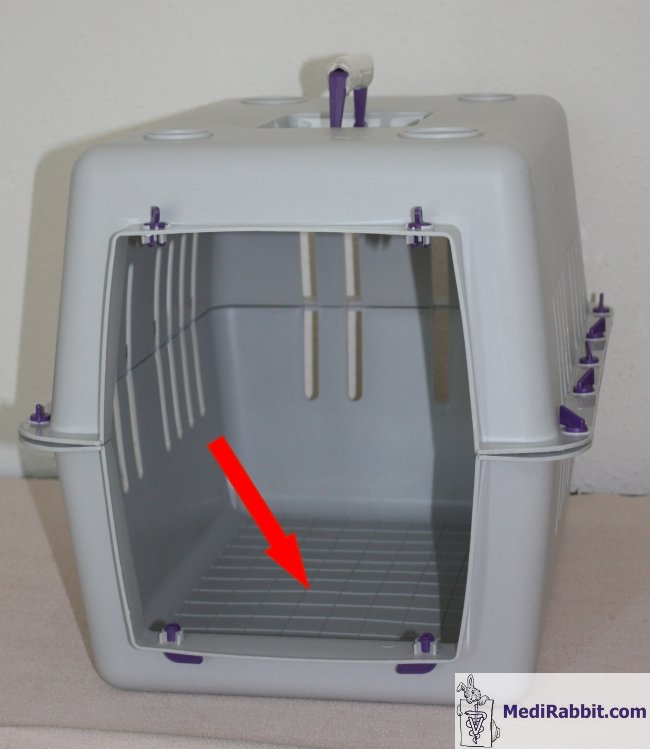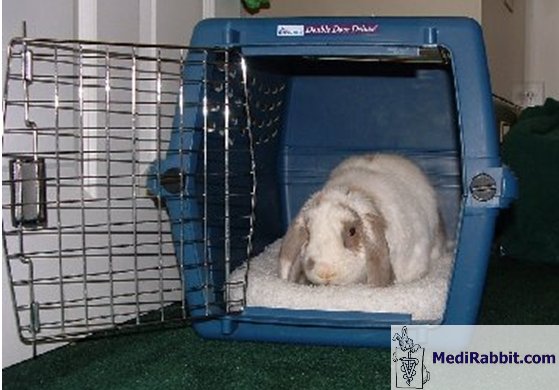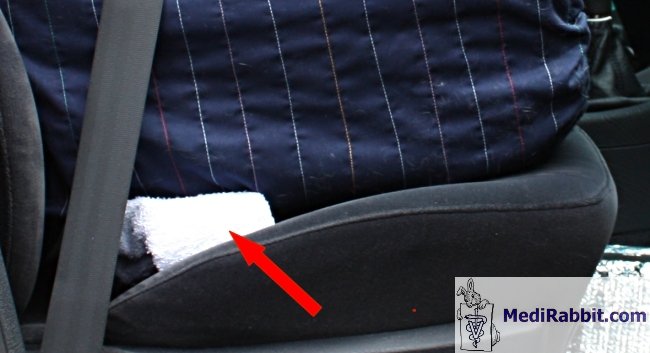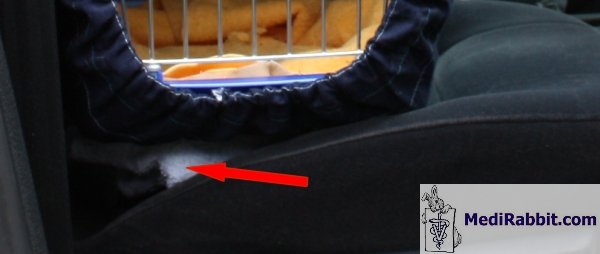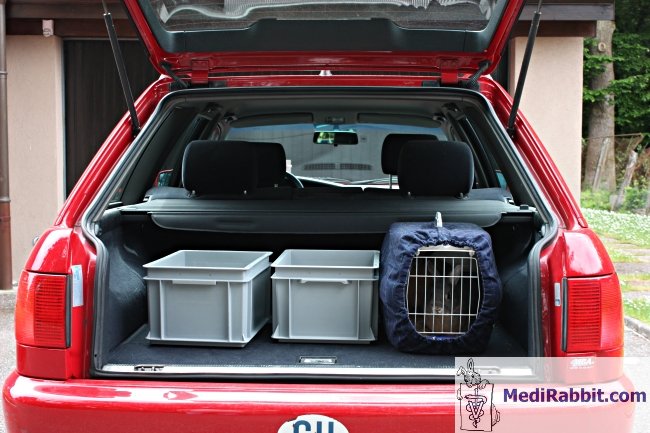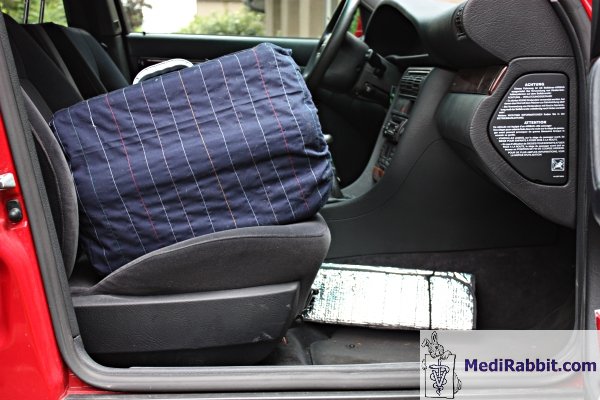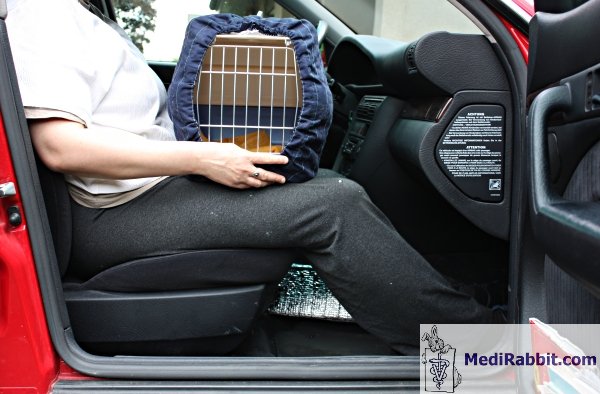
Safe transport by car
|
Rabbits
are frail animals that are easily stressed, and their transport represents a
challenge. The carrier used for transport should be sturdy and protect the
animal from exposure to the environment as much as possible. Allergens,
sunlight, car lights, cold temperatures, visual observation by people or
even other animals could potentially stress a rabbit in a carrier. The
carrier should have a solid bottom, without a grid or holes
as these can also cause injury. Nylon or cloth material carrier bags
for pets, or a cardboard box should be avoided since a rabbit can easily
make a hole in these materials.
Safe methods of transport Transportation in a carrier should
not be longer than necessary, from home to the veterinary clinic. If the trip is long, stops should be scheduled at regular
intervals. The car should be well ventilated, and the inside temperature not
reach higher than 24°C (75.2°F). Unless restricted by the
veterinarian for some reason (e.g: before a surgery)
food, hay and water should be supplied. Fresh vegetable or herbs can be
provided if the travel is long. The
carrier with the rabbit should never be left alone in a car, even when parked
in the shade. Temperature inside a car quickly climbs to reach 30 to 45°C (86
to 113°F) on summer days, even when a window is left open for
ventilation. Very quickly, the parked car
environment becomes fatal to the rabbit. Several
methods are available for proper and safe transport of rabbits. The following
pictures suggest safe methods of the transporting of rabbits in their carrier
by car. Depending upon the car, the experience of the owner, the size
and weight of the carrier, safe car transport methods may differ
slightly.
NOT SAFE
Thanks
to Duncan, Yara and Stampi, for their help. |
e-mail: info@medirabbit.com

